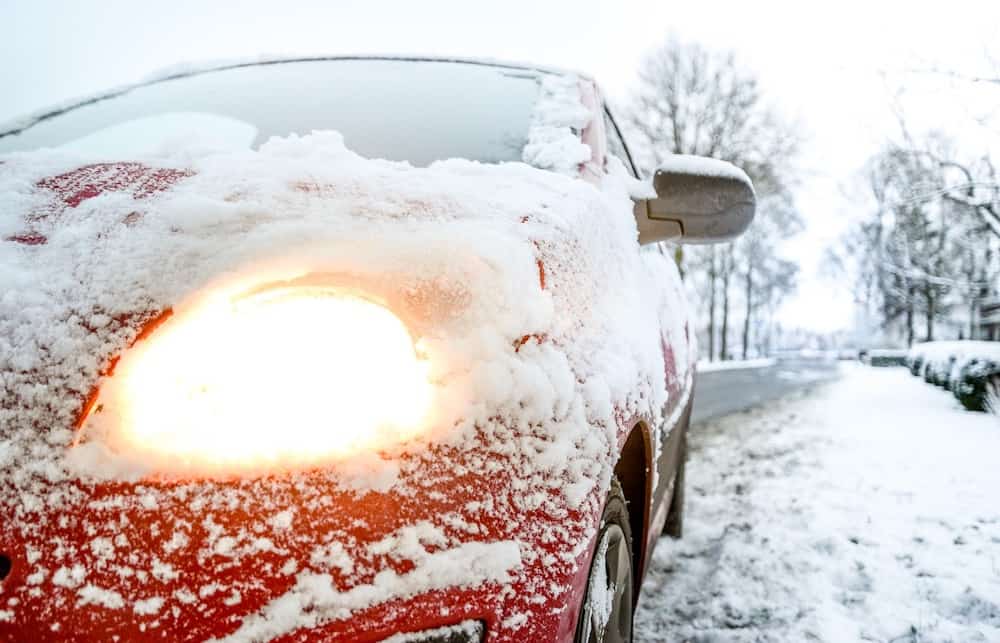Few situations are so inconvenient as a car breaking down. You have a destination and a schedule to meet, and now it is ruined. After the initial frustration, you have to accept a harsh reality. Now you have a problem at hand which requires a solution. Add the fact that your car just broke down in cold weather and you will realize that not only you have a problem, but you are also facing a potential risk situation.
The idea behind this article is preventing (rather than regretting) your car breaking down in cold weather offering you a list of top tips to reduce the probability of such situation. Read on:
1. Use snow tires
If you live in a zone where it usually snows and cold weather then you should use snow tires. All-Season tires are suitable for mild driving conditions, but if you really want to reduce the chances of a car breaking down in cold weather, then snow tires are a must. Their tread design is especially suited for snow so they will ensure permanent contact with the road.
2. Inspect tires tread depth
Driving in cold weather with snow and the uncertainty of encountering black ice on the road means that your first priority is ensuring good traction. That’s why before doing anything else you need checking tires tread depth. A tire with a tread depth lower than 6/32″ (or 3mm) should not be used. Snow tires depend heavily on the tread depth to gain traction. They need compressing snow in their grooves to release it as the tire rolls later. When the tire tread is not depth enough the ability to keep the contact with the road decreases and thus the risk of skidding rises.
It’s crucial checking tires tread before winter arrives in order to take action in case you need a new pair. Never overlook the importance of this factor.
3. Check tires pressure
You want to check snow tires tread depth before winter, and then once a month during winter. However, regarding tires pressure, it is a good idea checking it constantly if possible. The coldest the weather the highest the risk of your car breaking down. Event snow tires can suffer from extreme cold and lose air. Low tire pressure is equivalent to insufficient tread depth, which raises the risk of hydroplaning.
4. Check the electrical system
Cold weather has a direct effect on some electrical components. Take the car battery for instance. The lower the ambient temperature, the harder to maintain its electrical charge thus increasing the risk of your car breaking down. Running out of battery is one of the worse case scenarios because your engine will eventually die and using the car heating system won’t be possible. That’s why it’s highly recommended taking your car to a good garage and ask for a complete electrical system check before the cold season starts.
5. Use the appropriate engine oil
Depending on where you live you may continue using your regular engine oil or switch to a thinner more adequate winter oil. There is a lot of debate around this topic as arguments for keeping your engine oil or changing it are both very solid. You may wonder how engine oil viscosity could possibly make my car breaking down in the first place?
The answer is simple, in extremely cold weather a vehicle may not be able to be turned on if using an engine oil too thick. While the vehicle is at home, it is not directly exposed to wind and snow. Thus the risk of breaking down is lower. But when you go out and park the car outside the scenario is completely different. Engine oil won’t “freeze” in a strict sense but will become even thicker than it is already. Most modern vehicles rely on specific engine oil viscosities and when the oil passes certain threshold will be literally impossible its flow through the engine oil passages.
As a rule of thumb, unless you live in a zone with extremely cold weather, a fully synthetic 5W-30 will be adequate during winter, and even other stations. On the other hand, for areas with temperatures below -10°C is recommended winter specific engine oil with viscosities in the order of 0W-20. Always check your owner’s manual before buying engine oil.
6. Keep the fuel tank full
A common reason that can possibly lead your car breaking down is related to fuel condensation issues. Petrol won’t freeze, but the water vapor particles present in the fuel tank will. The lower your fuel level, the higher the risk of condensation. Above a certain point, the mix of water and fuel will inevitably cause your car breaking down. To prevent this situation always try to keep your fuel level above 50%.
7. Change windshield wipers
Cold weather is known for creating cracks in any rubber in contact with air. Check your windshield wipers periodically. Change if necessary. A piece as simple as a windshield wiper can transform in your worse nightmare during a winter storm.
8. Verify serpentine belt condition
The serpentine belt drives power to all engine accessories, including the alternator, water pump, air conditioning, power steering pump, and more. And guess what is made from rubber. Always check its condition, expect your car is breaking down instantly if the serpentine belt fails.
9. Check the engine coolant
Last but not less, the most sensible fluid during cold weather is your engine coolant since its 95%+ water based. Using a high-quality anti-freeze coolant guarantees your car is not breaking down in the short term.
Bonus tips: Prepare for Everything
Unforeseen events happen no matter how much care you put on your part. That’s why we consider pertinent closing the article with bonus tips that could minimize your exposure to unnecessary risks if your car breaks down.
- Verify that you have a good emergency kit in your car. Jumper cables, triangle reflector, first-aid kit, a working flashlight, and a basic set of tools is the bare minimum you should have.
- Always keep a pair of blankets, or better yet winter clothes, in your trunk. In the eventuality of your car breaking down in a road with low traffic this could even save your life.
- With similar reasoning than the last point, include as part of your emergency kit food with a high calories value, like chocolates, almonds, and nuts.
- If you got trapped without cell phone coverage, then try to stay calm. Exercise regularly, move your arms and legs and under no circumstances go sleep.



